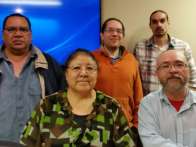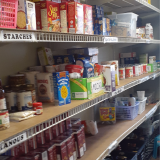The Ojibwe Community and Water in Minnesota
Story Narrative:
This story was collected as part of a collaborative effort to record the state of American lakes, rivers, and waterways as well an attempt to uncover what water means to Americans. Listen to other stories recorded by the Minnesota Humanities Center for the Stories from Main Street project, an initiative created by the Smithsonian Institution Traveling Exhibition Service for its traveling exhibition "Water/Ways."
Mille Lacs Band of Ojibwe community members:
Natalie Weyaus: I think we teach our children that we respect water because we were born in water and that’s one of our teachings.
Mike Wilson: Villages up and down that river -- there were dozens of them.
Charles Lippert: (Native American language). But the Grindstone Lake is really unusual that it is a very, very, very deep lake and it’s considered healing waters and people will go there and because of its secluded-ness it also provided shelter for people and it became one of the hub locations for villages.
Mike Wilson: When we first got plumbing on my Dad’s Reserve, no one wanted it in their house. They argued against it, because they did not want to (expletive) in the water or pee in it or anything like that because it was unthinkable, I guess, at that time -- “Oh, no. That’s not our way”, so they put up outhouses and use the outhouses even though the animals go in the water all the time. We used to talk about that, too, “Don’t drink any water near the beaver house!”
Fred Keller: Do people ever ask you or the Anishinabe community how to take better care of the water?
Terry Kemper: I think spiritual people do – they talk to us. We talk amongst each other all the time about these things, you know, and with other tribes and other nations, but I am not so sure that the mainstream society does or is concerned about it. I don’t think they really realize where they are at right now because it’s flowing so freely out of their faucets, you know. I think that a lot of Native American people realize that - where the water is at because we still remember a day when it was clear water out there – when you could go down there and scoop it right out and drink it out of the rivers and our people tell us stories about that, you know.
Asset ID #6732
Media Files:
-
Ojibwe Community members Natalie Weyaus, Mike Wilson, Charles Lippert and Terry Kemper
-
Hear this community's story.




